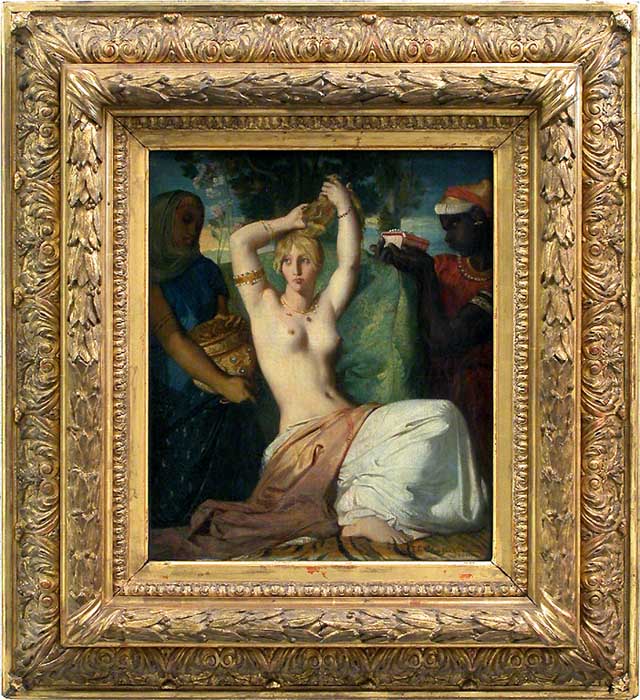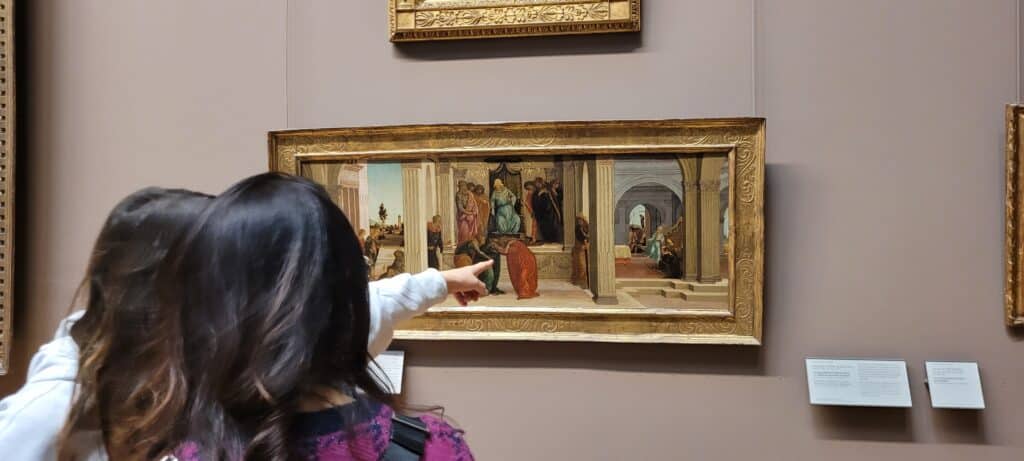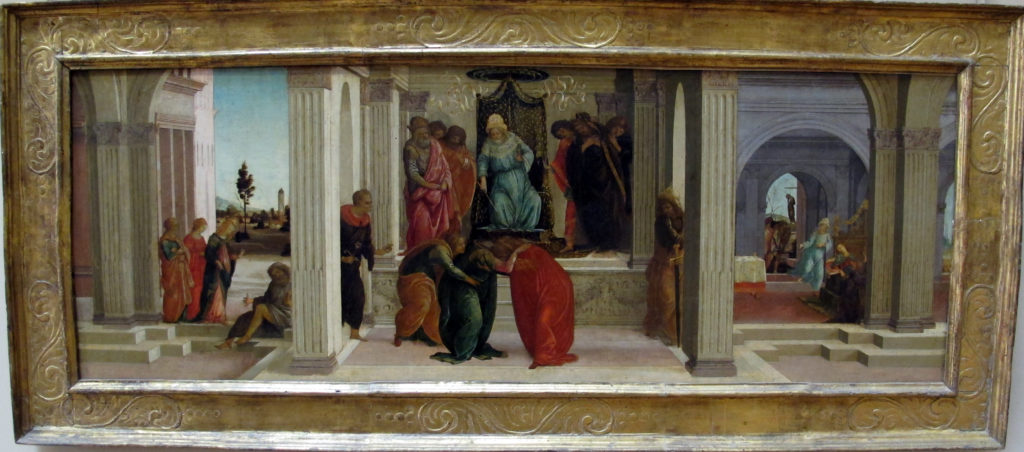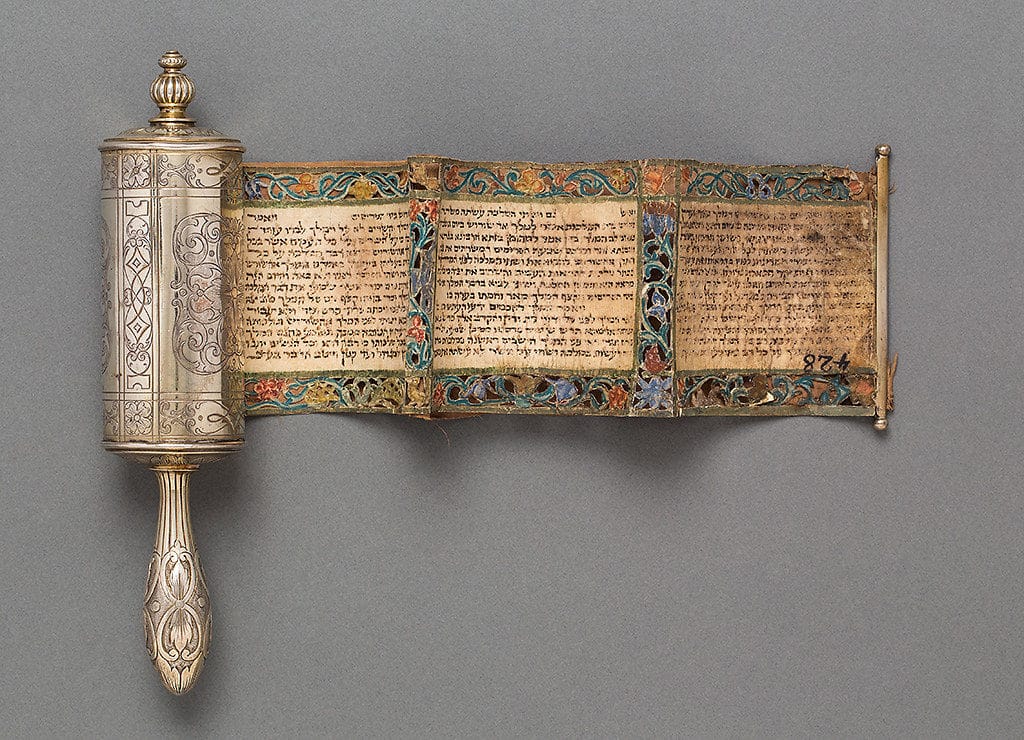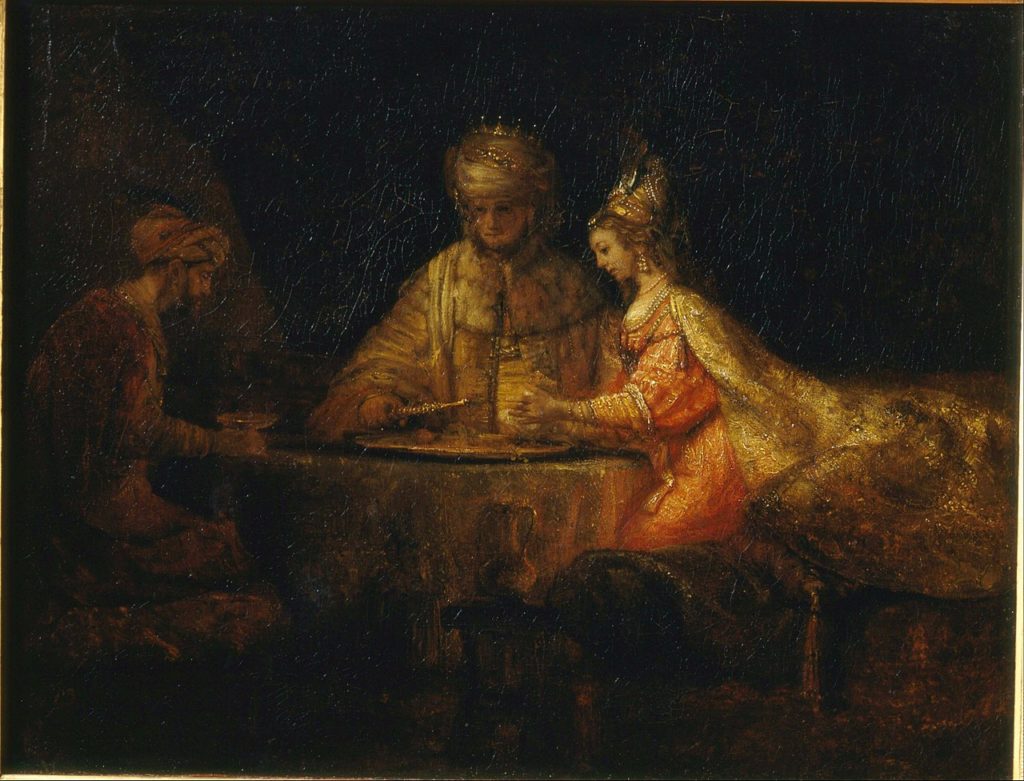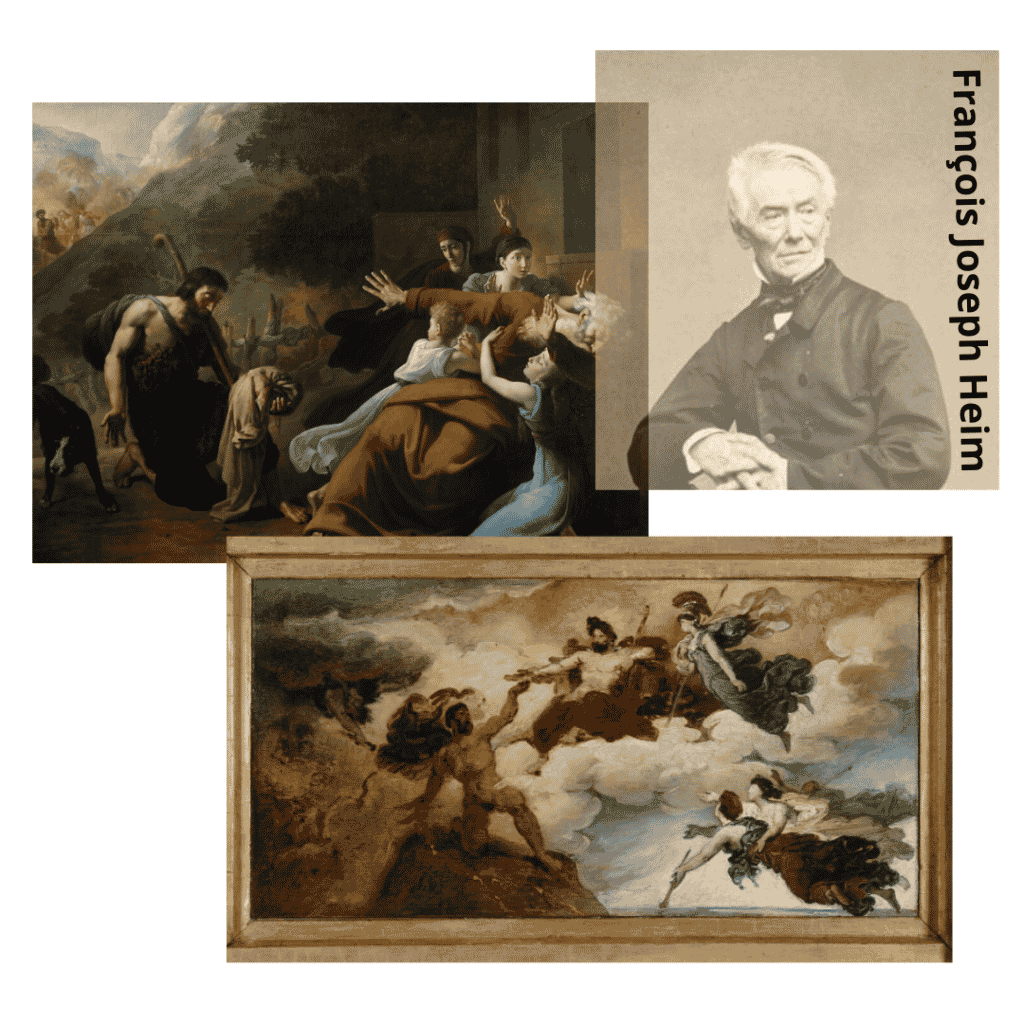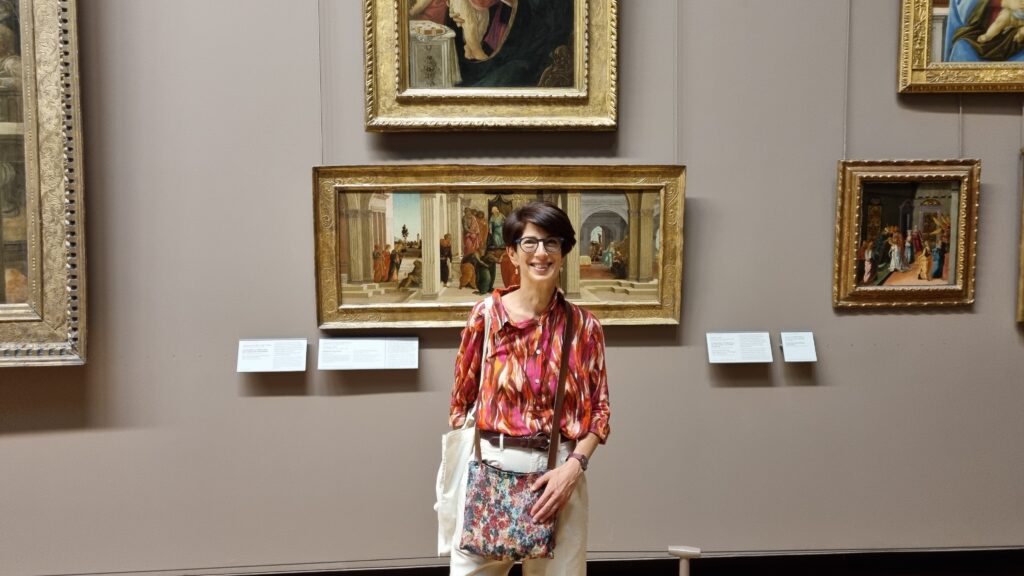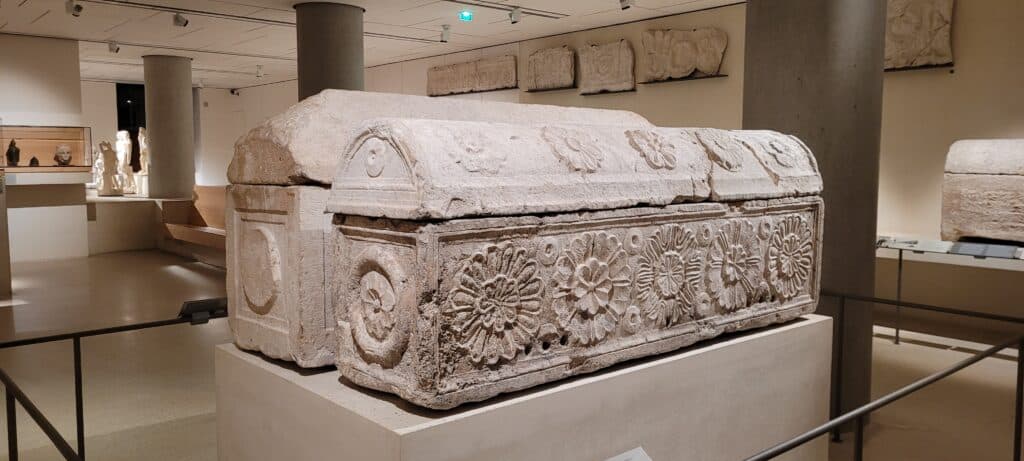The Scroll of Esther in the Louvre
Esther : The Woman who Saved the Jewish People !
In the Louvre, you will see the painting of Esther preparing to be presented to King Ahasuerus by Théodore CHASSÉRIAU, 1841 :
A Jewish Treasure in the Louvre : Esther
During the Quarantine of Paris on 2020, one reads : “The Musée du Louvre, Tuileries Garden and Cour Carée will remain closed until further notice”, pinching oneself, on the opening page of the Louvre’s website.
Yet, closed or open, the mere idea of the Louvre being there – like many other of these temples of arts, venues of theater, music, cinema…. – should be some sort of comfort and a cradle for hope these days.
It may also be some relief to know – when the museum is open – that only about 35,000 objects are exhibited, out of the 500,000 that lie in the museum’s reserve…
Some relief, we said, since this knowledge may also lead to some stress, especially if one wishes to visit the Louvre just once and see it all (a simple calculation will show that one thus needs to stroll non-stop for about 4 days, spending 10 seconds in front of each object…)
Yet the greatest comfort comes of course from knowing that every time one enters the Louvre, and wished to wander, in whatever section, wing, or floor that may be, there is a brand new adventure – in time, in space and in spirit – that awaits with myriad of marvels that may unfold.
And all this may very well happen, while standing in front of one sole object…
Let’s give it a try with Esther !
The Story of Esther from Botticelli to the Purim Feast
When you go to the Louvre, on our way in the “Denon wing”, to the Great Gallery, with its Italian painters (which in other words may mean: on our way to the Mona Lisa, without forgetting, in front of her, the largest painting in the Louvre, Veronèse’s Wedding of Cana), we pass through one charming hall, the Salon carré, which, in one of the transformations of the Palace, was turned into a chapel and used for celebrating the wedding of Napoleon I and Marie-Louise of Austria.
It holds today Italian paintings of the early and high Renaissance in Florence.
Among them, the following, rather small, rectangular panel (about 4,3 feet long and 2 feet high):
The painting is entitled Life of Esther or Scenes from the Story of Esther.
The artist to whom it is attributed is Filippino Lippi.
Here exactly is where our journey starts.
Wedding Chests by Filippino Lippi and Sandro Botticelli
The painting we see, originally decorated one side of a pair of cassoni (plural of cassone) which were marriage chests, generally offered by the future husband to his wife for her to store her dowry. It is one out of six panels: two rectangular ones which decorated one of the fronts of each chest, and four smaller square placed on each end of the rectangular panel.
Whose wedding? We are not sure. Some believe it was commissioned by a Florentine Jewish family. Others, that it was a command on the occasion of a marriage within the Torrigiani and the Nicolò Tucci families, whose descendants sold the panels in the 19th century.
Who are the artists? While the panel in the Louvre mentions only Filippino Lippi, the set of the six panels is generally attributed to two Florentine painters: Filippino Lippi (1457-1504) and Sandro Botticelli (1445-1517). Filippino was the (illegitimate) son of the renowned Florentine painter Fra’ Filippo Lippi (from Filippo’s relationship with Lucrezia Buti, a novice of the Order who was model for some of his Madonnas).
In 1469, after his father’s death, the 11 years old Filippino, who had already trained under his father, completed his apprenticeship with Botticelli. The panels are generally dated 1470-1475, the period when Filippino worked in Botticelli’s workshop.
Yet, historians of art are hesitant as to the degree of Botticelli’s participation in the making of these works. Some claim Botticelli was responsible for the overall design of the panels, but delegated the detailed work to Lippi.
Others surmise both artists worked on the two cassoni depending on which panel.
According to more recent studies, based on infrared reflectography and x-ray images, there may have even been another pair of hands involved.
But what is the story told in these 6 panels of which one had found its way to the Louvre…
The Scroll of Esther
Esther Scroll and case, Italy, 18th century
The Levy Collection in the Magnes Collection of Jewish Art and Life University of California, Berkeley
As the title tells us, the panels represent different scenes inspired by the Story of Esther, the twenty-first Book of the Hebrew Bible and one of the 5 scrolls (Megillot). The story is set in Shushan (Susa), the Persian capital, in the third year of the reign of king Ahasuerus, generally identified as Xerxes I, who ruled over the Persian empire between 486 and 465 BC.
It tells us how Haman, the royal vizier, planned to exterminate all the Jews of the kingdom, as a revenge against one Jewish man, Mordecai, who refused to bow before him. The plot was foiled in extremis by Mordecai and Queen Esther.
Orphaned at a young age, Esther had been adopted and raised by her cousin Mordecai, and, when chosen by Ahasuerus to be a queen, Esther did not reveal her Jewish heritage. The entire biblical story is structured around various banquets and feasts.
It is indeed by feasting and rejoicing that the day of deliverance is to be celebrated, in order to commemorate the happy outcome of the conspiracy, known as the feast of Purim, the word meaning “lots”, suggesting the unexpected shift in the fate of the Jews.
The feast of Purim is celebrated each year on the 14th of Adar as a carnival-like festival with rejoicing and jubilation, motivated by the failure of the genocidal project, yet tinted with a kind of a forewarning that the threat of annihilation is still hanging above, like the sword of Damocles.
On the model of the feast of Purim, anniversaries were commemorated of other episodes which occurred in the course of history in which Jews were saved from the massacre.
Thus, the Purim of Narbonne in 1236 refers to the survival of the city’s Jews, who eschewed the massacre by the governor Don Aymeric, and the Purim of Medzhybizh in 1649 commemorates how the Jewish community of the town was spared from the bloodthirsty hordes of the Cossacks under the leadership of Bohdan Khmelnitsky.
The Tradition of Purim Shpil
Carnival, Commedia dell’arte and Parody
The book of Esther gave birth to a plethora of literary interpretations, both in Ashkenazy and Sephardic Jewry. From the Middle Ages on, in various liturgies, the story of Esther was retold in poetic form. Yet, a parallel tradition evolved as well – influenced by secular and Christian folk entertainment, carnival, drama and parody –the Purim Shpil, a Yiddish word meaning “play”. The Shpil could take the form of a parodic poem, play, song, dance… usually based on the story of Esther. The term was found in Ashkenazy Jewry as early as the mid-1500’s. Interesting to note that the first Shpil was found in Italy in 1555 and that some of the secular stories that were portrayed derived from the characters of the Italian commedia dell’arte.
One of the first Purim Shpils in Yiddish dates back to 1697, Akhashveyresh Shpil (The Ahasverus play), which gave birth to various other farces like Acta Esther mit Mordekhay (Acts of Esther and Mordecai) published in Prague in 1763, Erretung der Juden durkh Esther und Mordekhay (The rescue of the Jews by Esther and Mordecai), published in Amsterdam in 1780, and, in 1848, Akhaveryrosh Shpil (Ahasverus Play) in Lemberg. These burlesque plays, linked to the feast of Purim, a mixture of song, pantomime and dance, are said to become the matrix of Yiddish theatre. The Purim Shpil was an obvious vehicle for political satire. The tradition continued to the Twentieth century. For the renowned Yiddish writer and poet Itzik Manger Purim was a master metaphor for putting Jewish parody, drama, and the Bible back on the map. In 1936, two years before escaping Warsaw, he writes his satirical Megilè-lider (Songs of the Megillah), that became a hit in Tel Aviv in 1965 when adapted to a klezmer style musical, despite the contempt towards the Yiddish language in the State of Israel. We also know of various as terrifying as courageous Purim Shpils taking place in concentration camps during the Holocaust.
Most fascinating is the case of Homens Mapole (Haman’s Fall), by Haim Sloves (1905-1988), playwright, lawyer and communist activist. Persecuted for his political activity Sloves fled to Paris, where, in 1940, he wrote this comedy. Greatly modified in 1945, it was staged in the years after the war by some of the finest actors of the Yiddish theater. The play portrays Hitler in the guise of a Haman who failed, despite everything, to exterminate Judaism in its entirety. A festival of resistance, Homens Mapole was seen as a message of resilience for the survivors.
Hermosa and Santa Esther
a heroine of the Marranos
As for the Sephardic Jewry, it may not be surprising that the forcibly converted Jews in Spain and Portugal known as conversos, New Christians, and especially those who continued to practice their Judaism secretly (Marranos) were fascinated by the figure of Queen Esther, a woman of Jewish origin who had been forbidden to reveal her origins. While the cheerful and rejoicing part of the feast of Purim was entirely forgotten among the Marranos, the Fast of Esther (Taanit Esther) on Purim’s eve attracted their attention and became as important as Yom Kippur. (Interesting to note that some rabbinic commentaries on the Bible that go back to the late thirteenth century contain an extensive discussion on the relation, or rather confusion, between Purim and Yom Kippur.) Esther’s fast was thus strictly observed. It is mentioned in various documents of the Portuguese inquisition, as one of the accusations against New Christians for Judaizing. For the Marranos, the case of Esther, who kept in secret her Judaism, yet remained faithful to the religion of her fathers, was seen as almost identical with their own. Saving the people of Israel, she thus became the symbol of their messianic aspirations. Esther’s prayer, known by heart, was transmitted throughout generations, and while various Jewish feasts, traditions and customs got lost, the Fast of “Santa” Esther was still practiced by the Marranos who were found in Portugal in the 20th century!
Beyond places of worship, Esther came to be represented in secular contexts. where she embodied ideals of freedom, hope, and redemption against oppression.
Thus, she was invested with political and social values, and was readily adapted to a given historical situation.
Fascinating to see how this flowering representation of the history of Esther follows the historical-geographical journey of the Marrano Diaspora, through France, the Netherlands, Italy (etc) :
a successful theater piece, Esther, written by the Portuguese Marrano Salomon ben Abraham Usque, was performed in Venice in 1558; an anthology of poems including Poema de la Reyna Ester was published in Rouen, in 1627, by the Portuguese poet Marrano João Pinto Delgado, who escaped the Inquisition, and dedicated the poem to Cardinal Richelieu.
Esther is a mirror of the intertwining of Judaism and Christianism
(and back to our wedding chests)
The biblical figure of Esther is one of the mirrors of the intertwining of two cultures, Jewish and Christian. In the eyes of the newly converted Jews who embraced Christianity, Esther is seen as a prefiguration of the Virgin Mary. Free from the stain of original sin, Mary (Immaculate Conception) was going to save the world from the Devil through Christ’s intercession, just as Esther had delivered the Jews from the punishment devised by Ahasuerus. The converso Felipe Godinez, who tried to bring about both his Jewish and his Christian convictions, wrote a dramatic piece La Reina Ester (1613). In the third act, the Angel Gabriel appears and announces to the Queen that the Son of God will be born in the line of Israel and will have as his mother an immaculate virgin… With time, other Christian interpretations see in the Book of Esther an allegory representing the relationship between the Church – the bride – and God.
Here is how, close to the end of our journey, we may see, as some scholars suggest, the correlation between the Marrano trajectory and the larger artistic representations of Esther which became a real fashion during the Renaissance and afterwards. All this, brings us back to our wedding chests…
The two panels indeed seem “suited” to their role: among the themes evoked is a warning against women’s pride (or rather, women’s independence) – one of the panels depicts the fate of Vashti, king Ahasverus first wife, who was repudiated for having disobeyed her husband… The clothing of the characters is particularly detailed, the chests may very well be intended to contain these fabrics.
Rembrandt in the Louvre:
We could of course go on and on, as we have not even mentioned La Hermosa Ester, (The beautiful Esther) of the Spanish playwright and poet Lope de Vega, Esther, Tragedy from the de Holy Scriptures by Jean Racine, written at the request of Louis XIV’s wife, la marquise de Maintenon, Rembrandt’s Ahasveros and Haman at the Feast of Esther, Handel’s oratorio… but it is really getting late and we already hear the loudspeaker announcing “the Louvre is closing down”…
One last question :
where are the other panels of the two cassoni?
Well, they are spread around the world, split between five museums.
A full composition of our two cassoni
Invitation to other journeys :
Cassone 1 (from left to right):
- Esther at the Palace Gate, Ottawa, National Gallery, Canada
- Ahasverus chooses Esther, Musée Condé, Chantilly
- Vashti repudiated, Museo Horne, Florence
Cassone 2 (from left to right):
- Mordecai in Tears or La Derelitta, Palazzo Pallavicini Rospigliosi, Rome
- Three scenes Story of Esther: Mordecai Lamenting; Esther Faints Before Ahasuerus; Haman Begs in Vain for Mercy (and, in the background: Haman is hung), Musée du Louvre, Paris.
- The triumph of Mordecai, Ottawa, National Gallery, Canada.
More of the Jewish Louvre treasures :
François Joseph Haim is the painter of the Destruction of Jerusalem by the Romans (currently not available at the Louvre, not anymore), but you can see many of his painting in the Louvre :
About the Author :
Livia is a passionate Jewish Tour guide in Paris curating the Jewish Heritage Walking Tour of Paris in Le Marais.
Livia is passionate about the Jewish History in Europe.
She animated workshops for years with the Shoah Memorial in Paris, and also toured with groups of teenagers from the schools of Paris to teach them about the shoah and the jewish history of Europe.
She also writes amazing articles about interesting Jewish subjects that she selects.
For example , you can read her recent article : Chocolate and Jews : Introduction of Chocolate in Europe
More books to explore :
Joel Berkowitz, Inventing the Modern Yiddish Stage: Essays in Drama, Performance, and Show Business, Wayne State University Press, 2012.
Pinchas Menachem Feivlovitz, Purim in Nazi Hell
David G. Roskies, “The Last of the Purim Players: Itzik Manger,” Prooftexts 13:3 (September 1993), p. 211-235.
Cecil, Roth, History of the Marranos, [1932], Varda Books, 2001.
Nathan Weinstock, Le Livre d’Esther dans la tradition occitane judéo-comtadine, Institut d’études occitanes, 2018.
More Jewish treasures in the Louvre ?
Read our recent story about the Tomb of Queen Helena of Adiabene in the Louvre
We also offer a Jewish History tour in the Louvre Museum that could paired with the Masterpieces tour of the Louvre Museum.
